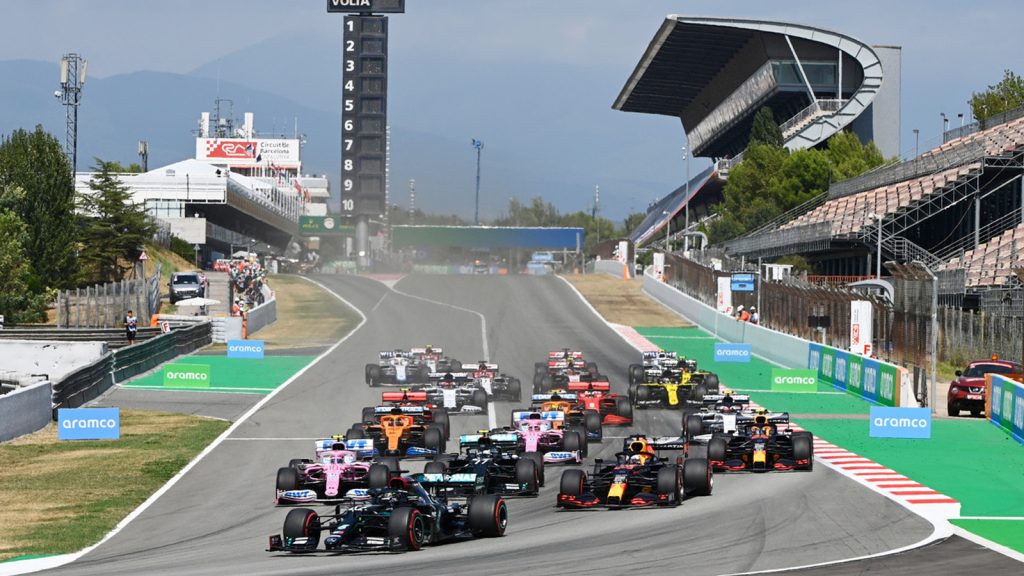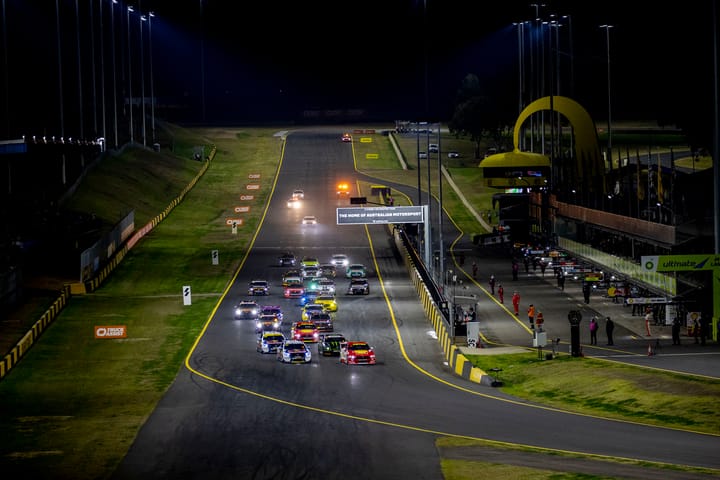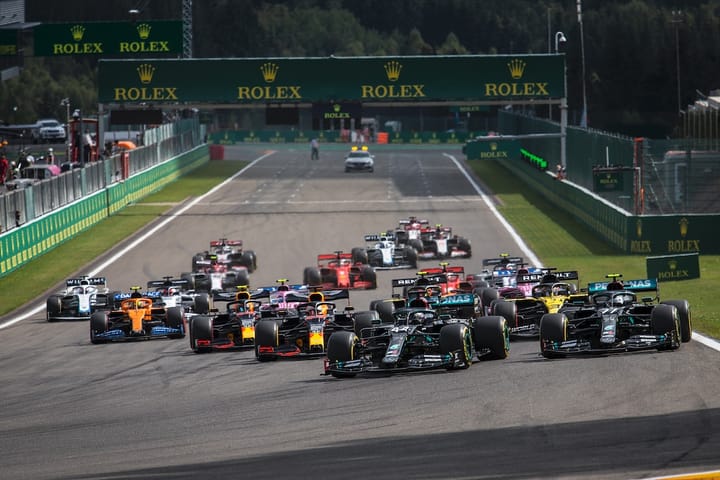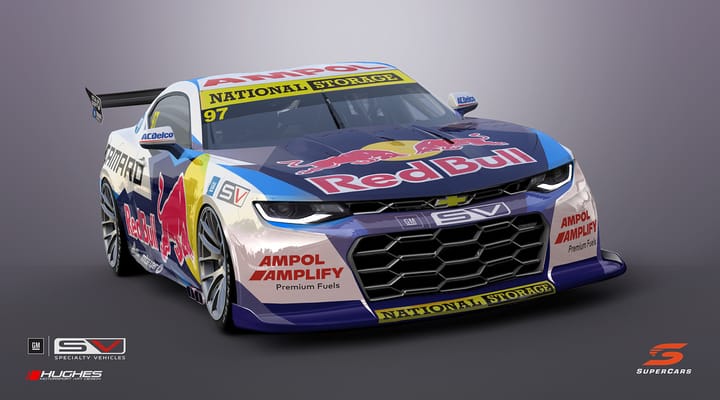Joe Saward Looks Back To Wrap F1 In 2020

Nine months ago, at the end of March, the future of Formula 1 looked decidedly uncertain.
The global pandemic had exploded, countries everywhere were shut down and people were dying in large numbers.
Covid-19 struck just as the motor racing season was beginning.
F1 sailed into the storm in Melbourne, where the Australian GP was called off when a member of the McLaren team tested positive before the first race and the team wisely – and responsibly – withdrew. The other teams took a vote that saw a 5-5 split (McLaren not voting but obviously being against the idea of pushing on) and that was enough to kill the race because 10 cars is not sufficient to make it an event that would be valid for the World Championship.
Australian authorities wanted to push on but the whole thing fell apart and the race was called off.
After that, F1 disappeared for more than three months. There was nothing anyone could do.
Staff were furloughed, factories closed, cost-cutting decisions made. Some factories turned to producing medical equipment.
Some folk said that F1 should forget the year completely, but that was not the answer as F1 employs thousands of people and, without races, there can be no revenue and without revenue there is no future.
So the Formula One management began to work out how to hold 15 races, the magic number at which point contracts with the TV companies and sponsors would all be locked-in and have to pay the fees agreed, although obviously they all wanted suitable discounts as they were not paying for the full 22 races.
In order to host sufficient events Formula One had to find solutions and new business models, as races without paying spectators could not generate the required race fees. Without people the promoters could not balance their books. Some dropped out, others tried to push on only to be stopped by government rules, others did deals and, in some cases, F1 simply rented the circuits in order to hold races that would get the sport to the required number.
We will not know how bad the final damage is until the end of February when Liberty Media reports its fourth quarter and year-end results. What we do know is that in the first three financial quarters the sport netted $850 million. That sounds like a lot, but when compared to $1.9 billion in the same period in 2019 one can see the possible scale of the problem.
F1 is big business but the pandemic has been hitting the sport across the board. We have seen some swingeing cuts from some manufacturers: BMW gutted its motorsport programs and even ended relationship with teams that date back decades, notably the Schnitzer team and RBM.
Volkswagen has closed down its motorsport department, Audi has been pulled out of Formula E and any activity in the future looks like being with customer teams only. The VW Group is also killing Bentley’s motorsport programs.
The running of national championships has been relatively easy in comparison to the international championships, but NASCAR, IndyCar and Supercars in Australia all had complex times. The World Rally Championship cut back and focussed on Europe, the World Sports Car Championship did what it could, Formula E took the unusual decision to run six races in Berlin just to get the season done. Others simply cancelled the whole show.
F1 developed the idea of bubbles within a form of biosphere, with no-one admitted to the paddock unless they had a negative test and then once inside they had to stick to their different groups, limiting contact as much as possible with everyone else. This worked very well although by the middle of the summer it was clear that the discipline seen in the early races was not quite as rigid.
There were 80,000 official Covid tests and fewer than 100 of them came back positive. Having said that, there were other testing arrangements made by some of the teams and other organisations involved and when people tested positive they were not included in the official figures because they did not attend the races.
The F1 group did a pretty remarkable job to create a 17-event calendar, starting in the first weekend in July. It was all crammed in to just 23 weekends with 12 different countries.
It was brutal stuff, including four triple-headers. But F1 was the first international sport to return in a meaningful fashion – and it was a huge achievement.
Although Mercedes dominated more than some people would like, it was still a remarkable season with (Sir) Lewis Hamilton beating Michael Schumacher’s long-standing record of 91 victories and matching the German’s seven world titles.
There were terrific victories for Pierre Gasly and Sergio Perez and the return of a number of popular F1 venues: the Nurburgring Imola and Istanbul Park, plus some new tracks: Mugello and Portimao and the outer circuit at Sakhir.
In Melbourne, F1 CEO Chase Carey said that the pandemic would provide “an opportunity to evolve the sport, experiment and try new things”. He spoke of expanding e-sports, developing innovative content and other creative ways to drive ongoing value for the sport’s sponsor partners, broadcast partners, race promoters, teams and fans. The results of this included trialling triple-headers, a two-day Grand Prix (but only because there was no choice) and trying to create more interest in virtual racing. The sport also moved to become more socially-acceptable with programs to promote diversity, equality and better environmental credentials.
Diversity and equality are difficult because the sport chooses people based on their qualifications and experience and if the candidates are not sufficiently diverse racing organisations cannot be expected to hire people based on their ethnicity nor their sex. The problem is a wider issue that goes beyond the sport, as F1 can only help to try to attract more youngsters to science, technology, engineering and mathematics (STEM) subjects.
Chase Carey has run F1 since January 2017, taking over the business when Liberty Media completed its acquisition of the Formula One Group. He was not a man who had any knowledge of the sport – nor much interest in it – but he did a quite remarkable job in his four years in charge, getting the major players to agree not only to a cost cap but also a much fairer Concorde Agreement, which will run from January 2021 until the end of 2025.
He did this through gentle persuasion and patient argument, some thing that the F1 world was not used to dealing with, after decades being run by Bernie Ecclestone. He will now move to the role of non-executive chairman while Stefano Domenicali will step in as CEO. Domenicali understands the sport and is universally respected, so the hope is that the sport will continue to move forward with those involved working together in a positive fashion off the track.
We have seen several teams juggling their ownership to make themselves stronger, including the restructuring of the shareholdings of World Champions Mercedes AMG Petronas, the sale of shares in McLaren and the sale of Williams. Renault is also re-branding as Alpine and Racing Point becomes Aston Martin in 2021.
The pandemic had many knock-on effects, not all of them obvious In the early part of the F1 season. For example, when the staffing in the paddock was cut to an absolute minimum, drivers were not allowed to have the same support around them during race weekends. This impacted the younger ones more than those who were more experienced and resilient.
Lando Norris, Esteban Ocon and Alex Albon in particular were left very alone at a time when they perhaps needed more help. But as the rules relaxed and more people were allowed in, we saw them all make steps forward.
Lewis Hamilton became the great champion that he is because he was supported in his younger days and was given the time to grow and develops, making mistakes and learning from them. Lewis has some quirky ways but at heart remains an uncomplicated individual, a little innocent even.
But when he is in a racing car, he is mighty and his success – coupled with the failure of others – meant that the 2020 season saw him win 11 of the 16 races. He might have won more but for mistakes. Fans might like to have seen more variety, but such is his dominance at the moment, and so good is the team – that it will take time to change that. This is not a bad thing. It is how the sport is and it does not bend to gimmickry to try and liven things up.
Reversed grids and such things may provide interesting races in other formula, but they have no place in the World Championship. We have seen sports car racing try to solve Toyota domination by playing with the rules to try to balance performance, but no-one gains from that. Victory is hollow if it is achieved with unfair assistance and the credibility of the series suffers accordingly.
Hamilton was so dominant that he could still win when things went wrong and his best win of the year was the stunning victory in Turkey. Lewis is fully matured as a racer and his approach has become more analytical, preparing his car for the race. In qualifying he and Valtteri Bottas were remarkably close and, given that Lewis holds the all-time record for pole positions, one has to say that Bottas is pretty impressive. But in the races Lewis has it all under control and there is nothing Bottas can do about it – except learn.
Bottas is much-maligned but does a terrific job. He soaks up the pain, he’s not controversial, he wins when he can and is the perfect number two to an exceptional number one.
George Russell stepped in for Lewis at the Sakhir GP and did an astonishingly good job, only being robbed of a possible win by a massive screw-up with tyres and then additional bad luck with a puncture. This does not mean that anyone can drive the Mercedes, it means that George is a remarkable talent. But he is going to have to wait for his chance to come along… because changing things at Mercedes makes no sense as long as the team is winning.
Whether it is good idea that Lewis wants to use his fame to talk about issues outside the sport remains to be seen. That is the path he has chosen and one can always hope that he can make a difference. The risk is that he will make a difference to himself more than he will to the world. But you cannot fault him for trying.
Lewis won 11 times, which left slim pickings for Valtteri (two wins), Max Verstappen (two wins) and a win apiece for Pierre Gasly and Sergio Perez.
Max was the primary opposition and, while it is clear that in the right car the Dutchman will be a World Champion, he needs to be in the right car. The Red Bull Honda combination was good, but not good enough. Max made few mistakes and was on the podium in every race he finished – bar Turkey.
The second Red Bull has always been a bit of a challenge with Max in the team and Alex Albon is still learning and so it was no great surprise that he could not match Max’s pace. It was a tough year but Alex stayed positive and gained more stability as the season went on and the decision to replace him in 2021 was tough on him. The Red Bull was a better car than its rivals but not by much and so Alex was often victim of falling into the hurly-burly of the battle to be best of the rest.
The fact that all of the top 13 drivers in the championship were all on the podium at one point or another gives an indication of just how close things were behind the top two teams.
McLaren ended up winning that fight from Racing Point and Renault, and it was a good solid year from the Woking-based team with Carlos Sainz and Lando Norris proving to be a good young team. The car was solid but not exceptional, and it will be interesting to see what happens next year when the team switches to Mercedes power-plants and Daniel Ricciardo arrives to replace the Ferrari-bound Sainz.
Racing Point and Renault were at odds from the start both on and off the track, with the French team unhappy about the fact that Racing Point had openly copied the 2019 Mercedes. But the rules allowed that and the only impact Renault could make was to get a 15-point penalty for Racing Point for using the Mercedes brake ducts that became a controlled item in 2020.
Without that, Racing Point would have finished third. One can argue that the team would have scored more points with a better driver in the second car, as Lance Stroll has his moments – but he is not in the same class as Sergio Perez and others.
Still, without Lance the sport would not have his father’s money nor the Aston Martin brand as a stand-alone team. Perez drove brilliantly all year and finished fourth in the World Championship, despite missing two races when he tested positive for Covid-19. With Nico Hulkenberg stepping when required the team was very solid.
One can only wonder how many points would have been scored by Perez and The Hulk if they had been the driver line-up. The fact that Perez was left without a drive at the end of the season (until Red Bull stepped in) was ludicrous, but it is a sign of the times.
Renault quietly chipped away, getting better and improving itself. The arrival of new CEO Luca de Meo gave the team the corporate support it needed and the decision to use the Alpine name in the future means that things are solid. Daniel Ricciardo showed his class all year but Esteban Ocon got better and better. The arrival next year of Fernando Alonso will be interesting because the Spaniard can be a divisive force.
Ferrari ended the year sixth in the Constructors’ championship – its worst season since 1980. The woeful effort showed the team was clearly hobbled by the FIA tightening the fuel flow metering rules.
Ferrari has tried to make the case that other engines were also impacted but if it was the case it was minimal. The fact that the team agreed to a secret deal which resulted in its worst performance in 30 years suggests that the alternative (whatever that might have been) must have been a worse option. Whatever the case, it was a huge disaster for the Italians and heads should have rolled.
In the circumstances, Charles Leclerc generally did a superb job, with some quite startling qualifying results which sometimes translated into race results. But he was hobbled by the car – or rather the engine. He was more confident in the car than Sebastian Vettel and this made him look pretty second rate. When he pushed hard he made mistakes, but the relationship was troubled anyway as Ferrari had already decided to dump Vettel and hire Sainz.
Scuderia AlphaTauri (Toro Rosso) finished in seventh, as it did in four of the past six years. This season the team scored more points than ever before, scoring 22 more than last year and three-times its score in 2018. Pierre Gasly’s victory at Monza was obviously the high point, but the French refugee from Red Bull Racing showed that he is far better than his spell in Milton Keynes suggested.
Dani Kyvat, another man who suffered at the hands of Red Bull, was similarly feisty and solid. Sadly, the Russian has since been dropped to make way for the promising Honda favourite Yuki Tsunoda, as Red Bull obviously wants to be nice to Honda so it can use the Japanese engines in 2022 even if Honda has departed the F1 scene.
Alfa Romeo (Sauber) was pretty unconvincing. The team can argue that the Ferrari engines held it back (which was true) but the whole thing seems to be drifting along a little too much, which reflects on the management more than anything. The team scored just eight points, compared to 57 in 2019 and 48 in 2018, but remained eighth.
Haas was ninth despite the efforts of Kevin Magnussen and Romain Grosjean, both of whom are being replaced. The team also suffered as a result of the uncompetitive Ferrari engines, while the cars were better than in 2019.
Romain Grosjean’s crash in Bahrain showed how strong modern F1 cars are and the level at which the whole field is operating. The good news is that Gene Haas wants to move things along and is not about to give up.
Williams was at the back again in 10th place for the third consecutive year, despite using Mercedes engines. The team was sold in the mid-season and the Williams Family left F1, but to leave with some money was a decent withdrawal. It could have been far worse if the trends had continued. The new owners are aiming to build the team back up and that should be possible.
George Russell provided some inspiration and the team did begin to make some progress towards the tail-end of the grid. But it is going to be a long journey.





